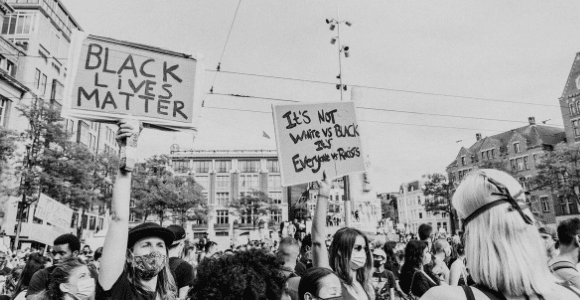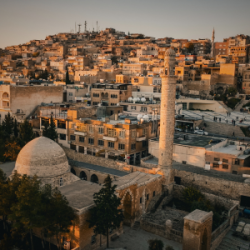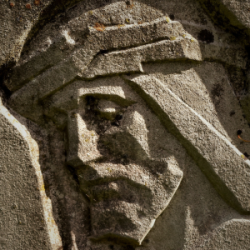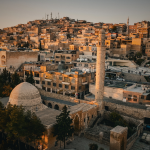Welcome readers! Please subscribe through the buttons on the right if you enjoy this post.
(Read this series from its beginning here.)

By the time John’s gospel was written, the story of Jesus and the Temple has evolved. It has become concerned not with a system that exploits the poor but with one that defiles religious space. The writer’s emphasis is not on the Temple as a building at the center of a system that perpetuates poverty, but on the Temple as a symbol for Jesus’ body which would be crucified and then resurrected (John 2:14, 19-20).
I understand why so many people have focused on John’s version of the story recently. Many Christians have begun their stride toward the Easter holiday and its focus on the death and resurrection of the Christ. I find Mark’s political and economic emphasis on the systemic exploitation of the poor much more helpful at this time in the U.S., however.
It’s important to connect the context of Jesus’ temple protest in Mark with his other acts and statements that day:
“As he taught, Jesus said, ‘Watch out for the teachers of the law. They like to walk around in flowing robes and be greeted with respect in the marketplaces, and have the most important seats in the synagogues and the places of honor at banquets. They devour widows’ houses and for a show make lengthy prayers. These men will be punished most severely.” (Mark 12:38-40)
Jesus’ concern here is the economic exploitation of the most vulnerable: how widows are being forced into poverty. He is not concerned that something is being done incorrectly in the temple’s worship system.
Mark continues:
“Jesus sat down opposite the place where the offerings were put and watched the crowd putting their money into the temple treasury. Many rich people threw in large amounts. But a poor widow came and put in two very small copper coins, worth only a few cents. Calling his disciples to him, Jesus said, “Truly I tell you, this poor widow has put more into the treasury than all the others. They all gave out of their wealth; but she, out of her poverty, put in everything—all she had to live on.”
This statement is not praise for the widow as so many Christians interpret it today. No, Jesus is critiquing a system that leaves widows with nothing left to live on!
This story ends with:
“As Jesus was leaving the temple, one of his disciples said to him, ‘Look, Teacher! What massive stones! What magnificent buildings!’ ‘Do you see all these great buildings?’ replied Jesus. ‘Not one stone here will be left on another; every one will be thrown down.’ (Mark 12:41-13.2)
In Mark, Jesus is not speaking about his own death and resurrection as he is in John. He is speaking about how exploitative systems are not sustainable and will eventually crumble under the weight of their own injustice.
We’ll discuss how this relates to our present economic system, next.













